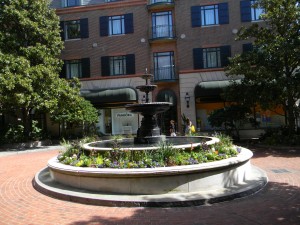 The person that thinks they can do something and the person that thinks they cannot do it are both right. I heard that bit of wisdom at a training many years ago and it has stuck with me as one the most true things I have ever learned. I think it is time to pull it out and get it back into play. Many communities are struggling. Even without the drama of Tropical Storm Irene we have been in an economic crisis for some years now. Rural communities have seen out-migration of their populations — in search of jobs, affordable housing and vibrant communities. Infrastructure is aging, not just our roads and bridges but the municipal water and sewer systems have reached (or exceeded) their life expectancy. And our communities are aging…heading toward fixed incomes just at the time that we most need their tax dollars. Faced with these challenges, it would be easy to get depressed, frustrated and angry. But there is a tool that communities can rely on to begin to draft workable solutions for their communities.
The person that thinks they can do something and the person that thinks they cannot do it are both right. I heard that bit of wisdom at a training many years ago and it has stuck with me as one the most true things I have ever learned. I think it is time to pull it out and get it back into play. Many communities are struggling. Even without the drama of Tropical Storm Irene we have been in an economic crisis for some years now. Rural communities have seen out-migration of their populations — in search of jobs, affordable housing and vibrant communities. Infrastructure is aging, not just our roads and bridges but the municipal water and sewer systems have reached (or exceeded) their life expectancy. And our communities are aging…heading toward fixed incomes just at the time that we most need their tax dollars. Faced with these challenges, it would be easy to get depressed, frustrated and angry. But there is a tool that communities can rely on to begin to draft workable solutions for their communities.
Asset-based p lanning begins with a focus on what the community has rather than what the community lacks. So, for example, a community that has high unemployment might choose to focus instead on it’s natural beauty. In that way the community will be moved to leverage that asset to create new opportunities. By building on what they have (natural resources), they might choose to emphasize tourism rather than industrial recruitment as a way to build employment.
lanning begins with a focus on what the community has rather than what the community lacks. So, for example, a community that has high unemployment might choose to focus instead on it’s natural beauty. In that way the community will be moved to leverage that asset to create new opportunities. By building on what they have (natural resources), they might choose to emphasize tourism rather than industrial recruitment as a way to build employment.
The simple theory behind asset-based planning is that by focusing on what you already have you will be in a better position to attract new resources. If you only focus on what you lack you create a bleak scenario. Not only will it be difficult to attract outside funders, it will be challenging to motivate your own citizens.
UVM Extension has staff and resources that can help your community begin to plan for the future using your assets as the foundation for the future.
Tags: assets, communication, managing change

